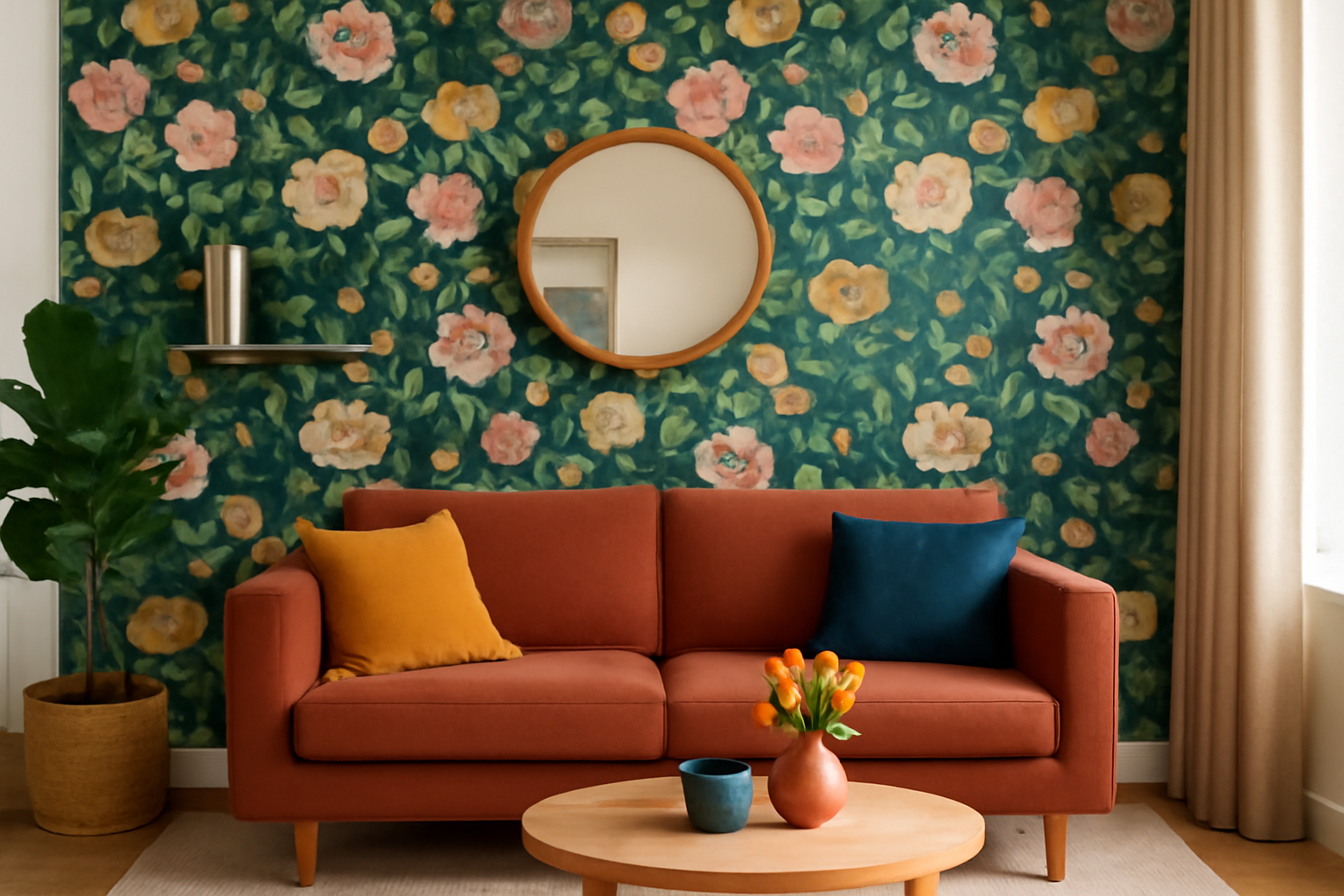Wallpaper is one of the most powerful tools for transforming a space. Whether you want to add texture, pattern, or bold colors, the right wallpaper can inject personality, charm, and style into any room.
Here’s how to use wallpaper creatively and effectively in your home.
Choose the Right Space
Not every wall needs wallpaper. Focus on areas where it will make the most impact:
- Accent walls: Perfect for living rooms, bedrooms, or dining areas.
- Entryways or hallways: Add personality where it’s often unexpected.
- Bathrooms or powder rooms: Smaller spaces can handle bold patterns.
- Ceilings: Create a “fifth wall” for a dramatic effect.
Decide on the Style
Match the wallpaper to your overall interior style:
- Modern: Geometric patterns, abstract designs, clean lines.
- Traditional: Floral patterns, damask, or classic stripes.
- Bohemian: Bold colors, eclectic patterns, global motifs.
- Minimalist: Textured wallpapers like linen, grasscloth, or subtle prints.
Consider the Scale of the Pattern
- Large patterns: Best for bigger rooms or accent walls. They make a bold statement.
- Small patterns: Ideal for small rooms or subtle enhancements, adding texture without overwhelming.
Balance With Furniture and Decor
- Pair bold wallpapers with simple, neutral furniture.
- If the wallpaper has multiple colors, pull accent colors from it for cushions, rugs, or artwork.
- Avoid cluttering the space with busy furniture when the wallpaper is a focal point.
Use Temporary (Peel-and-Stick) Wallpaper for Flexibility
Perfect for renters or those who like to change styles often:
- Easy to apply and remove without damaging walls.
- Great for testing bold choices without long-term commitment.
Try Textured Wallpapers
Wallpaper isn’t always about color and pattern. Textured wallpapers add depth:
- Grasscloth: Adds natural texture and warmth.
- Faux brick or wood: Brings an industrial or rustic vibe.
- Metallic finishes: Adds a touch of glam.
Combine Wallpaper With Paint
- Use wallpaper on the top half of a wall and paint the bottom half (or vice versa).
- Frame wallpaper panels with molding for a sophisticated look.
Don’t Forget Small Spaces
- Closets: Add a fun surprise with patterned interiors.
- Cabinet backs: Line open shelving or glass-front cabinets with wallpaper for a pop of color.
- Nooks and alcoves: Perfect spots for wallpaper to shine.
Light Matters
- Glossy or metallic wallpapers reflect light, making small or dark rooms feel brighter.
- Matte wallpapers absorb light and can add coziness to large, open spaces.
Installation Tips
- Always measure twice and order extra rolls for pattern matching.
- Hire a professional for large-scale projects or tricky patterns.
- For DIY, start with small areas or peel-and-stick options.
Common Mistakes to Avoid
- Ignoring scale: A small pattern in a large room can get lost; a large pattern in a tiny space can overwhelm.
- Overloading patterns: If wallpaper is bold, keep fabrics and rugs simple.
- Skipping prep: Walls need to be clean, smooth, and primed for the best results.
Final Thoughts
Wallpaper is a powerful design tool that can completely transform a room’s look and feel. Whether you choose bold patterns, subtle textures, or playful designs, wallpaper lets you express your personality and creativity in ways that paint alone cannot. With careful planning and thoughtful placement, your space can go from ordinary to extraordinary.
